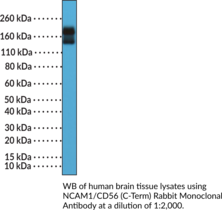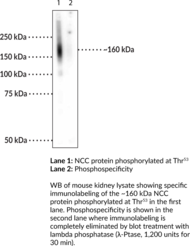Cayman
Showing 31651–31800 of 45550 results
-
Narcissoside is a flavonoid glycoside that has been found in the plant Z. simplex and has antioxidative and antitumor activities.{51190,51191} It scavenges 27.74, 33.41, and 63% of 2,2-diphenyl-1-picrylhydrazyl (DPPH; Item No. 14805) radicals in a cell-free assay when used at concentrations of 1, 10, and 100 µM, respectively.{51191} It inhibits activation of Epstein-Barr virus early antigen (EBV-EA) induced by phorbol 12-myristate 13-acetate (TPA; Item No. 10008014) in Raji cells and inhibits TPA-induced papilloma formation in mice when 85 nmol is applied topically prior to TPA application twice per week.{51190}
Brand:CaymanSKU:27759 - 5 mgAvailable on backorder
Nargenicin is a macrolide antibiotic that selectively inhibits the growth of S. aureus, methicilin resistant S. aureus (MRSA), and M. luteus (MICs = 0.6, 0.3, and 2.5 μg/ml, respectively) over a panel of 11 Gram-positive and Gram-negative bacteria (MICs = >80 μg/ml).{42263} It dose-dependently inhibits S. aureus DnaE in the presence of DNase I-activated DNA and E. coli DnaE when used at concentrations of 0.00001-0.1 and 0.01-100 μg/mL, respectively.{42264} In murine BV-2 microglial cells, nargenicin (1 μM) inhibits cytokine expression and nitric oxide production induced by LPS.{42265} Nargenicin (200 μM), when used in combination with 1,25-dihydroxyvitamin D3 or all-trans retinoic acid (Item No. 11017), reduces cell proliferation by 37-47% and increases cell differentiation by 82-85% in HL-60 human myeloid leukemia cells.{42266} In vivo, nargenicin (50 mg/kg, p.o.) reduces the number of colony-forming units (CFUs) in infected kidneys by 100,000-fold in a murine model of S. aureus infection.{42264}
Brand:CaymanSKU:25456 - 1 mgAvailable on backorder
Nargenicin is a macrolide antibiotic that selectively inhibits the growth of S. aureus, methicilin resistant S. aureus (MRSA), and M. luteus (MICs = 0.6, 0.3, and 2.5 μg/ml, respectively) over a panel of 11 Gram-positive and Gram-negative bacteria (MICs = >80 μg/ml).{42263} It dose-dependently inhibits S. aureus DnaE in the presence of DNase I-activated DNA and E. coli DnaE when used at concentrations of 0.00001-0.1 and 0.01-100 μg/mL, respectively.{42264} In murine BV-2 microglial cells, nargenicin (1 μM) inhibits cytokine expression and nitric oxide production induced by LPS.{42265} Nargenicin (200 μM), when used in combination with 1,25-dihydroxyvitamin D3 or all-trans retinoic acid (Item No. 11017), reduces cell proliferation by 37-47% and increases cell differentiation by 82-85% in HL-60 human myeloid leukemia cells.{42266} In vivo, nargenicin (50 mg/kg, p.o.) reduces the number of colony-forming units (CFUs) in infected kidneys by 100,000-fold in a murine model of S. aureus infection.{42264}
Brand:CaymanSKU:25456 - 5 mgAvailable on backorder
Naringenin is a citrus-derived flavonoid that inhibits CYP3A4 activity in human liver microsomes (IC50s = 139-188 μM).{18074,22311} At 100 mg/kg/day, naringenin selectively inhibits the transcription of Smad3 and directly down-regulates TGF-β1, significantly reducing lung metastasis in mice with bleomycin-induced pulmonary fibrosis.{22310} Naringenin demonstrates both lipid lowering and insulin-like properties in low-density lipoprotein (LDL) receptor-deficient mice fed a Western diet containing 1-3% naringenin by correcting VLDL overproduction, ameliorating hepatic steatosis, and attenuating dyslipidemia without affecting caloric intake or fat absorption.{22309}
Brand:CaymanSKU:-Naringenin is a citrus-derived flavonoid that inhibits CYP3A4 activity in human liver microsomes (IC50s = 139-188 μM).{18074,22311} At 100 mg/kg/day, naringenin selectively inhibits the transcription of Smad3 and directly down-regulates TGF-β1, significantly reducing lung metastasis in mice with bleomycin-induced pulmonary fibrosis.{22310} Naringenin demonstrates both lipid lowering and insulin-like properties in low-density lipoprotein (LDL) receptor-deficient mice fed a Western diet containing 1-3% naringenin by correcting VLDL overproduction, ameliorating hepatic steatosis, and attenuating dyslipidemia without affecting caloric intake or fat absorption.{22309}
Brand:CaymanSKU:-Naringenin is a citrus-derived flavonoid that inhibits CYP3A4 activity in human liver microsomes (IC50s = 139-188 μM).{18074,22311} At 100 mg/kg/day, naringenin selectively inhibits the transcription of Smad3 and directly down-regulates TGF-β1, significantly reducing lung metastasis in mice with bleomycin-induced pulmonary fibrosis.{22310} Naringenin demonstrates both lipid lowering and insulin-like properties in low-density lipoprotein (LDL) receptor-deficient mice fed a Western diet containing 1-3% naringenin by correcting VLDL overproduction, ameliorating hepatic steatosis, and attenuating dyslipidemia without affecting caloric intake or fat absorption.{22309}
Brand:CaymanSKU:-Naringenin is a citrus-derived flavonoid that inhibits CYP3A4 activity in human liver microsomes (IC50s = 139-188 μM).{18074,22311} At 100 mg/kg/day, naringenin selectively inhibits the transcription of Smad3 and directly down-regulates TGF-β1, significantly reducing lung metastasis in mice with bleomycin-induced pulmonary fibrosis.{22310} Naringenin demonstrates both lipid lowering and insulin-like properties in low-density lipoprotein (LDL) receptor-deficient mice fed a Western diet containing 1-3% naringenin by correcting VLDL overproduction, ameliorating hepatic steatosis, and attenuating dyslipidemia without affecting caloric intake or fat absorption.{22309}
Brand:CaymanSKU:-Naringenin-4′-O-β-D-glucuronide is a main phase II metabolite of naringenin (Item No. 14173) that is detectable in urine.{32095}
Brand:CaymanSKU:10387 - 1 mgAvailable on backorder
Naringenin-4′-O-β-D-glucuronide is a main phase II metabolite of naringenin (Item No. 14173) that is detectable in urine.{32095}
Brand:CaymanSKU:10387 - 500 µgAvailable on backorder
Naringenin-7-O-β-D-glucuronide is a main phase II metabolite of naringenin (Item No. 14173) that is detectable in urine.{32095}
Brand:CaymanSKU:10388 - 1 mgAvailable on backorder
Naringenin-7-O-β-D-glucuronide is a main phase II metabolite of naringenin (Item No. 14173) that is detectable in urine.{32095}
Brand:CaymanSKU:10388 - 10 mgAvailable on backorder
Naringenin-7-O-β-D-glucuronide is a main phase II metabolite of naringenin (Item No. 14173) that is detectable in urine.{32095}
Brand:CaymanSKU:10388 - 5 mgAvailable on backorder
Naringenin (Item No. 14173) is a citrus-derived flavonoid that inhibits cytochrome P450 (CYP) 3A4 activity in human liver microsomes (IC50s = 139-188 μM).{18074,22311} Naringin is a natural flavanone glycoside formed from naringenin and neohesperidose. It undergoes extensive metabolism in the liver, giving rise to naringenin and other bioactive metabolites that have anti-oxidant, anti-inflammatory, and anti-apoptotic effects.{29091} Naringin is a weak inhibitor of CYP3A4, providing 14% inhibition at 200 µM.{22311} It suppresses apoptosis in neurons and increases the expression of neurotrophic factor in dopaminergic neurons, providing neuroprotection.{29092}
Brand:CaymanSKU:-Available on backorder
Naringenin (Item No. 14173) is a citrus-derived flavonoid that inhibits cytochrome P450 (CYP) 3A4 activity in human liver microsomes (IC50s = 139-188 μM).{18074,22311} Naringin is a natural flavanone glycoside formed from naringenin and neohesperidose. It undergoes extensive metabolism in the liver, giving rise to naringenin and other bioactive metabolites that have anti-oxidant, anti-inflammatory, and anti-apoptotic effects.{29091} Naringin is a weak inhibitor of CYP3A4, providing 14% inhibition at 200 µM.{22311} It suppresses apoptosis in neurons and increases the expression of neurotrophic factor in dopaminergic neurons, providing neuroprotection.{29092}
Brand:CaymanSKU:-Available on backorder
Naringenin (Item No. 14173) is a citrus-derived flavonoid that inhibits cytochrome P450 (CYP) 3A4 activity in human liver microsomes (IC50s = 139-188 μM).{18074,22311} Naringin is a natural flavanone glycoside formed from naringenin and neohesperidose. It undergoes extensive metabolism in the liver, giving rise to naringenin and other bioactive metabolites that have anti-oxidant, anti-inflammatory, and anti-apoptotic effects.{29091} Naringin is a weak inhibitor of CYP3A4, providing 14% inhibition at 200 µM.{22311} It suppresses apoptosis in neurons and increases the expression of neurotrophic factor in dopaminergic neurons, providing neuroprotection.{29092}
Brand:CaymanSKU:-Available on backorder
Naringenin (Item No. 14173) is a citrus-derived flavonoid that inhibits cytochrome P450 (CYP) 3A4 activity in human liver microsomes (IC50s = 139-188 μM).{18074,22311} Naringin is a natural flavanone glycoside formed from naringenin and neohesperidose. It undergoes extensive metabolism in the liver, giving rise to naringenin and other bioactive metabolites that have anti-oxidant, anti-inflammatory, and anti-apoptotic effects.{29091} Naringin is a weak inhibitor of CYP3A4, providing 14% inhibition at 200 µM.{22311} It suppresses apoptosis in neurons and increases the expression of neurotrophic factor in dopaminergic neurons, providing neuroprotection.{29092}
Brand:CaymanSKU:-Available on backorder
Naringin dihydrochalcone is an artificial sweetener and flavonoid that has been isolated from various plants and has antioxidant activity.{51155,51156} It scavenges ABTS (Item No. 27317), oxygen, and 2,2-diphenyl-1-picrylhydrazyl (DPPH; Item No. 14805) radicals in cell free assays (IC50s = 24, 322.8, and 318.9 μM, respectively).{51156}
Brand:CaymanSKU:27791 - 10 gAvailable on backorder
Naringin dihydrochalcone is an artificial sweetener and flavonoid that has been isolated from various plants and has antioxidant activity.{51155,51156} It scavenges ABTS (Item No. 27317), oxygen, and 2,2-diphenyl-1-picrylhydrazyl (DPPH; Item No. 14805) radicals in cell free assays (IC50s = 24, 322.8, and 318.9 μM, respectively).{51156}
Brand:CaymanSKU:27791 - 25 gAvailable on backorder
Naringin dihydrochalcone is an artificial sweetener and flavonoid that has been isolated from various plants and has antioxidant activity.{51155,51156} It scavenges ABTS (Item No. 27317), oxygen, and 2,2-diphenyl-1-picrylhydrazyl (DPPH; Item No. 14805) radicals in cell free assays (IC50s = 24, 322.8, and 318.9 μM, respectively).{51156}
Brand:CaymanSKU:27791 - 5 gAvailable on backorder
Naringin dihydrochalcone is an artificial sweetener and flavonoid that has been isolated from various plants and has antioxidant activity.{51155,51156} It scavenges ABTS (Item No. 27317), oxygen, and 2,2-diphenyl-1-picrylhydrazyl (DPPH; Item No. 14805) radicals in cell free assays (IC50s = 24, 322.8, and 318.9 μM, respectively).{51156}
Brand:CaymanSKU:27791 - 50 gAvailable on backorder
Narirutin is a flavanone originally isolated from C. paradisi that has anti-inflammatory and antidepressant-like activities.{37744} It reduces airway sensitivity, eosinophil counts and IL-4 levels in bronchoalveolar lavage fluid (BALF), and serum IgE levels in an ovalbumin mouse model of allergic eosinophilic airway inflammation when administered at a dose of 10 mg/kg.{37745} Narirutin decreases immobility in the forced swim test and latency to feeding in the novelty-suppressed feeding test, indicating antidepressant-like activity in a mouse model of chronic mild stress-induced depression.{37746}
Brand:CaymanSKU:25124 - 10 mgAvailable on backorder
Narirutin is a flavanone originally isolated from C. paradisi that has anti-inflammatory and antidepressant-like activities.{37744} It reduces airway sensitivity, eosinophil counts and IL-4 levels in bronchoalveolar lavage fluid (BALF), and serum IgE levels in an ovalbumin mouse model of allergic eosinophilic airway inflammation when administered at a dose of 10 mg/kg.{37745} Narirutin decreases immobility in the forced swim test and latency to feeding in the novelty-suppressed feeding test, indicating antidepressant-like activity in a mouse model of chronic mild stress-induced depression.{37746}
Brand:CaymanSKU:25124 - 25 mgAvailable on backorder
Narirutin is a flavanone originally isolated from C. paradisi that has anti-inflammatory and antidepressant-like activities.{37744} It reduces airway sensitivity, eosinophil counts and IL-4 levels in bronchoalveolar lavage fluid (BALF), and serum IgE levels in an ovalbumin mouse model of allergic eosinophilic airway inflammation when administered at a dose of 10 mg/kg.{37745} Narirutin decreases immobility in the forced swim test and latency to feeding in the novelty-suppressed feeding test, indicating antidepressant-like activity in a mouse model of chronic mild stress-induced depression.{37746}
Brand:CaymanSKU:25124 - 5 mgAvailable on backorder
Narirutin is a flavanone originally isolated from C. paradisi that has anti-inflammatory and antidepressant-like activities.{37744} It reduces airway sensitivity, eosinophil counts and IL-4 levels in bronchoalveolar lavage fluid (BALF), and serum IgE levels in an ovalbumin mouse model of allergic eosinophilic airway inflammation when administered at a dose of 10 mg/kg.{37745} Narirutin decreases immobility in the forced swim test and latency to feeding in the novelty-suppressed feeding test, indicating antidepressant-like activity in a mouse model of chronic mild stress-induced depression.{37746}
Brand:CaymanSKU:25124 - 50 mgAvailable on backorder
NASPM is a synthetic analog of Joro spider toxin that blocks GluR2-lacking, Ca2+-permeable AMPA receptors. The blocking effect of NASPM on these receptors is use and voltage-dependent. At -60 mV, NASPM can suppress current responses in kainate-induced type II neurons (which are typified by strong inward rectification and high permeability to Ca2+) with an IC50 value of 0.33 µM.{29984} However, at +40 mV, NASPM does not affect Ca2+-permeable AMPA receptors.{29984} NASPM has been shown to protect against ischemia-induced neuronal cell death by preventing influx of toxic levels of Ca2+ into injured neurons.{29985} This compound can be used to study the role of GluR2 subunits in calcium permeability of AMPA receptors.{29983,29985}
Brand:CaymanSKU:-Available on backorder
NASPM is a synthetic analog of Joro spider toxin that blocks GluR2-lacking, Ca2+-permeable AMPA receptors. The blocking effect of NASPM on these receptors is use and voltage-dependent. At -60 mV, NASPM can suppress current responses in kainate-induced type II neurons (which are typified by strong inward rectification and high permeability to Ca2+) with an IC50 value of 0.33 µM.{29984} However, at +40 mV, NASPM does not affect Ca2+-permeable AMPA receptors.{29984} NASPM has been shown to protect against ischemia-induced neuronal cell death by preventing influx of toxic levels of Ca2+ into injured neurons.{29985} This compound can be used to study the role of GluR2 subunits in calcium permeability of AMPA receptors.{29983,29985}
Brand:CaymanSKU:-Available on backorder
NASPM is a synthetic analog of Joro spider toxin that blocks GluR2-lacking, Ca2+-permeable AMPA receptors. The blocking effect of NASPM on these receptors is use and voltage-dependent. At -60 mV, NASPM can suppress current responses in kainate-induced type II neurons (which are typified by strong inward rectification and high permeability to Ca2+) with an IC50 value of 0.33 µM.{29984} However, at +40 mV, NASPM does not affect Ca2+-permeable AMPA receptors.{29984} NASPM has been shown to protect against ischemia-induced neuronal cell death by preventing influx of toxic levels of Ca2+ into injured neurons.{29985} This compound can be used to study the role of GluR2 subunits in calcium permeability of AMPA receptors.{29983,29985}
Brand:CaymanSKU:-Available on backorder
NASPM is a synthetic analog of Joro spider toxin that blocks GluR2-lacking, Ca2+-permeable AMPA receptors. The blocking effect of NASPM on these receptors is use and voltage-dependent. At -60 mV, NASPM can suppress current responses in kainate-induced type II neurons (which are typified by strong inward rectification and high permeability to Ca2+) with an IC50 value of 0.33 µM.{29984} However, at +40 mV, NASPM does not affect Ca2+-permeable AMPA receptors.{29984} NASPM has been shown to protect against ischemia-induced neuronal cell death by preventing influx of toxic levels of Ca2+ into injured neurons.{29985} This compound can be used to study the role of GluR2 subunits in calcium permeability of AMPA receptors.{29983,29985}
Brand:CaymanSKU:-Available on backorder
Smoothened (SMO) is a GPCR-like receptor which, with Patched, mediates hedgehog signaling to regulate gene expression through the Gli transcription factors.{21774} 20(S)-hydroxy Cholesterol (20(S)-OHC) is an oxysterol which binds SMO and activates hedgehog signaling (EC50 = 3 μM), and this activation is selective for the nat-20(S)-OHC enantiomer.{21991} Nat-20(S)-OHC synergizes with the SMO agonist SAG, suggesting an allosteric effect.{21991} Nat-20(S)-yne is a form of nat-20(S)-OHC with a terminal alkyne group, which can be used in linking reactions known as click chemistry. Click chemistry involves highly dependable and specific azide-alkyne bioconjugation reactions and can be used to capture or immobilize bioactive molecules.{17990,17992} Thus, nat-20(S)-yne has been conjugated with magnetic beads to demonstrate that nat-20(S)-OHC directly binds SMO.{21991}
Brand:CaymanSKU:9001369 - 1 mgAvailable on backorder
Smoothened (SMO) is a GPCR-like receptor which, with Patched, mediates hedgehog signaling to regulate gene expression through the Gli transcription factors.{21774} 20(S)-hydroxy Cholesterol (20(S)-OHC) is an oxysterol which binds SMO and activates hedgehog signaling (EC50 = 3 μM), and this activation is selective for the nat-20(S)-OHC enantiomer.{21991} Nat-20(S)-OHC synergizes with the SMO agonist SAG, suggesting an allosteric effect.{21991} Nat-20(S)-yne is a form of nat-20(S)-OHC with a terminal alkyne group, which can be used in linking reactions known as click chemistry. Click chemistry involves highly dependable and specific azide-alkyne bioconjugation reactions and can be used to capture or immobilize bioactive molecules.{17990,17992} Thus, nat-20(S)-yne has been conjugated with magnetic beads to demonstrate that nat-20(S)-OHC directly binds SMO.{21991}
Brand:CaymanSKU:9001369 - 10 mgAvailable on backorder
Smoothened (SMO) is a GPCR-like receptor which, with Patched, mediates hedgehog signaling to regulate gene expression through the Gli transcription factors.{21774} 20(S)-hydroxy Cholesterol (20(S)-OHC) is an oxysterol which binds SMO and activates hedgehog signaling (EC50 = 3 μM), and this activation is selective for the nat-20(S)-OHC enantiomer.{21991} Nat-20(S)-OHC synergizes with the SMO agonist SAG, suggesting an allosteric effect.{21991} Nat-20(S)-yne is a form of nat-20(S)-OHC with a terminal alkyne group, which can be used in linking reactions known as click chemistry. Click chemistry involves highly dependable and specific azide-alkyne bioconjugation reactions and can be used to capture or immobilize bioactive molecules.{17990,17992} Thus, nat-20(S)-yne has been conjugated with magnetic beads to demonstrate that nat-20(S)-OHC directly binds SMO.{21991}
Brand:CaymanSKU:9001369 - 25 mgAvailable on backorder
Smoothened (SMO) is a GPCR-like receptor which, with Patched, mediates hedgehog signaling to regulate gene expression through the Gli transcription factors.{21774} 20(S)-hydroxy Cholesterol (20(S)-OHC) is an oxysterol which binds SMO and activates hedgehog signaling (EC50 = 3 μM), and this activation is selective for the nat-20(S)-OHC enantiomer.{21991} Nat-20(S)-OHC synergizes with the SMO agonist SAG, suggesting an allosteric effect.{21991} Nat-20(S)-yne is a form of nat-20(S)-OHC with a terminal alkyne group, which can be used in linking reactions known as click chemistry. Click chemistry involves highly dependable and specific azide-alkyne bioconjugation reactions and can be used to capture or immobilize bioactive molecules.{17990,17992} Thus, nat-20(S)-yne has been conjugated with magnetic beads to demonstrate that nat-20(S)-OHC directly binds SMO.{21991}
Brand:CaymanSKU:9001369 - 5 mgAvailable on backorder
Natamycin is a naturally-occurring macrolide polyene antifungal agent produced during fermentation by the bacterium S. natalensis, commonly found in soil. With minimal inhibitory concentrations ranging from 4-64 μM, natamycin is used to treat fungal infections, including Candida, Aspergillus, Cephalosporium, Fusarium, and Penicillium.{21495,21492,21494} Natamycin blocks fungal growth by binding specifically to ergosterol with an apparent affinity of ~100 μM, but it does not permeabilize cell membranes as other polyene antibiotics are known to do.{21492} Natamycin is also used in the food industry as a preservative.{21493}
Brand:CaymanSKU:11634 - 1 gAvailable on backorder
Natamycin is a naturally-occurring macrolide polyene antifungal agent produced during fermentation by the bacterium S. natalensis, commonly found in soil. With minimal inhibitory concentrations ranging from 4-64 μM, natamycin is used to treat fungal infections, including Candida, Aspergillus, Cephalosporium, Fusarium, and Penicillium.{21495,21492,21494} Natamycin blocks fungal growth by binding specifically to ergosterol with an apparent affinity of ~100 μM, but it does not permeabilize cell membranes as other polyene antibiotics are known to do.{21492} Natamycin is also used in the food industry as a preservative.{21493}
Brand:CaymanSKU:11634 - 100 mgAvailable on backorder
Natamycin is a naturally-occurring macrolide polyene antifungal agent produced during fermentation by the bacterium S. natalensis, commonly found in soil. With minimal inhibitory concentrations ranging from 4-64 μM, natamycin is used to treat fungal infections, including Candida, Aspergillus, Cephalosporium, Fusarium, and Penicillium.{21495,21492,21494} Natamycin blocks fungal growth by binding specifically to ergosterol with an apparent affinity of ~100 μM, but it does not permeabilize cell membranes as other polyene antibiotics are known to do.{21492} Natamycin is also used in the food industry as a preservative.{21493}
Brand:CaymanSKU:11634 - 50 mgAvailable on backorder
Nateglinide is a hypoglycemic agent.{38370,38371,38372} It induces insulin and somatostatin release from perfused rat pancreas when used at concentrations ranging from 0.03 to 3 μM.{38370} Nateglinide (3 µM) increases intracellular calcium levels in isolated rat pancreatic β cells, an effect that can be inhibited by the L-type calcium channel blocker nitrendipine (Item No. 17549). Nateglinide-induced secretion of insulin and somatostatin and calcium influx is also reversed by the potassium channel activator diazoxide (Item No. 14576). Oral administration of nateglinide (1.6 mg/kg) reduces blood glucose levels by 20% in fasted mice.{38371} It also decreases blood glucose levels in an oral glucose tolerance test in normal rats, genetically diabetic KK mice, and a rat model of diabetes induced by streptozotocin (STZ; Item No. 13104).{38372} Formulations containing nateglinide have been used in the treatment of type 2 diabetes.
Brand:CaymanSKU:23320 - 1 gAvailable on backorder
Nateglinide is a hypoglycemic agent.{38370,38371,38372} It induces insulin and somatostatin release from perfused rat pancreas when used at concentrations ranging from 0.03 to 3 μM.{38370} Nateglinide (3 µM) increases intracellular calcium levels in isolated rat pancreatic β cells, an effect that can be inhibited by the L-type calcium channel blocker nitrendipine (Item No. 17549). Nateglinide-induced secretion of insulin and somatostatin and calcium influx is also reversed by the potassium channel activator diazoxide (Item No. 14576). Oral administration of nateglinide (1.6 mg/kg) reduces blood glucose levels by 20% in fasted mice.{38371} It also decreases blood glucose levels in an oral glucose tolerance test in normal rats, genetically diabetic KK mice, and a rat model of diabetes induced by streptozotocin (STZ; Item No. 13104).{38372} Formulations containing nateglinide have been used in the treatment of type 2 diabetes.
Brand:CaymanSKU:23320 - 250 mgAvailable on backorder
Nateglinide is a hypoglycemic agent.{38370,38371,38372} It induces insulin and somatostatin release from perfused rat pancreas when used at concentrations ranging from 0.03 to 3 μM.{38370} Nateglinide (3 µM) increases intracellular calcium levels in isolated rat pancreatic β cells, an effect that can be inhibited by the L-type calcium channel blocker nitrendipine (Item No. 17549). Nateglinide-induced secretion of insulin and somatostatin and calcium influx is also reversed by the potassium channel activator diazoxide (Item No. 14576). Oral administration of nateglinide (1.6 mg/kg) reduces blood glucose levels by 20% in fasted mice.{38371} It also decreases blood glucose levels in an oral glucose tolerance test in normal rats, genetically diabetic KK mice, and a rat model of diabetes induced by streptozotocin (STZ; Item No. 13104).{38372} Formulations containing nateglinide have been used in the treatment of type 2 diabetes.
Brand:CaymanSKU:23320 - 5 gAvailable on backorder
Nateglinide is a hypoglycemic agent.{38370,38371,38372} It induces insulin and somatostatin release from perfused rat pancreas when used at concentrations ranging from 0.03 to 3 μM.{38370} Nateglinide (3 µM) increases intracellular calcium levels in isolated rat pancreatic β cells, an effect that can be inhibited by the L-type calcium channel blocker nitrendipine (Item No. 17549). Nateglinide-induced secretion of insulin and somatostatin and calcium influx is also reversed by the potassium channel activator diazoxide (Item No. 14576). Oral administration of nateglinide (1.6 mg/kg) reduces blood glucose levels by 20% in fasted mice.{38371} It also decreases blood glucose levels in an oral glucose tolerance test in normal rats, genetically diabetic KK mice, and a rat model of diabetes induced by streptozotocin (STZ; Item No. 13104).{38372} Formulations containing nateglinide have been used in the treatment of type 2 diabetes.
Brand:CaymanSKU:23320 - 500 mgAvailable on backorder
Nateglinide-d5 is intended for use as an internal standard for the quantification of nateglinide (Item No. 23320) by GC- or LC-MS. Nateglinide is a hypoglycemic agent.{38370,38371,38372} It induces insulin and somatostatin release from perfused rat pancreas when used at concentrations ranging from 0.03 to 3 μM.{38370} Nateglinide (3 µM) increases intracellular calcium levels in isolated rat pancreatic β cells, an effect that can be inhibited by the L-type calcium channel blocker nitrendipine (Item No. 17549). Nateglinide-induced secretion of insulin and somatostatin and calcium influx is also reversed by the potassium channel activator diazoxide (Item No. 14576). Oral administration of nateglinide (1.6 mg/kg) reduces blood glucose levels by 20% in fasted mice.{38371} It also decreases blood glucose levels in an oral glucose tolerance test in normal rats, genetically diabetic KK mice, and a rat model of diabetes induced by streptozotocin (STZ; Item No. 13104).{38372} Formulations containing nateglinide have been used in the treatment of type 2 diabetes.
Brand:CaymanSKU:30151 - 1 mgAvailable on backorder
Nav1.7 is a voltage-gated sodium channel encoded by the SCN9A gene that is expressed in sensory and dorsal root ganglia neurons as well as in the superficial laminae of the spinal cord.{41708} Nav1.7 amplifies small depolarizations of the membrane and is involved in pain perception. Inactivating gene mutations for Nav1.7 are responsible for congenital insensitivity to pain, a disorder characterized by a complete lack of pain perception. Activating gene mutations for Nav1.7 are responsible for various pain-related disorders. Mutations that decrease the action potential threshold by shifting the voltage dependence and slowing deactivation lead to hyperexcitability of dorsal root ganglia neurons in inherited erythromelalgia, which is characterized by redness and burning sensations in the feet.{41709} Missense mutations that reduce fast inactivation of Nav1.7 channels lead to persistent sodium current and are associated with paroxysmal pain disorder, which affects the sacral region and face.{41710} Cayman’s Nav1.7 Monoclonal Antibody (Clone S68-6) can be used for Western blot, immunoprecipitation, and immunocytochemistry applications.
Brand:CaymanSKU:13718 - 100 µgAvailable on backorder
Immunogen: Fusion protein amino acids 1,751-1,946 of rat Nav1.7 • Host: Mouse • Species Reactivity: (+) Human, mouse, and rat Nav1.7 • Applications: WB, IP, and ICC • MW = 225 kDa
Brand:CaymanSKU:13718- 100 µgAvailable on backorder
Immunogen: Fusion protein amino acids 1,751-1,946 of rat Nav1.7 • Host: Mouse • Species Reactivity: (+) Human, mouse, and rat Nav1.7 • Applications: WB, IP, and ICC • MW = 225 kDa
Brand:CaymanSKU:13718- 100 µgNazartinib is an irreversible inhibitor of mutant EGF receptors (EGFRs).{43039} It is selective for EGFR mutant cell lines, including H3255 and HCC827 lung adenocarcinoma cells (IC50s = 6.11 and 1.52 nM, respectively) and resistant H1975 non-small cell lung cancer cells (NSCLC; IC50 = 4.18 nM), over cells expressing wild-type EGFRs (IC50 = 160.6 nM for HaCaT keratinocytes). Nazartinib decreases phosphorylation of EGFR in H3255, HCC827, and H1975 cells (EC50s = 5, 1, and 3 nM, respectively) and inhibits cell proliferation (EC50s = 9, 11, and 25 nM, respectively) but does not affect cell proliferation in cell lines containing wild-type EGFR.{43040} It reduces tumor growth in an HCC827 lung adenocarcinoma mouse xenograft model when administered at doses ranging from 3 to 100 mg/kg per day for 21 days.
Brand:CaymanSKU:22409 -Out of stock
Nazartinib is an irreversible inhibitor of mutant EGF receptors (EGFRs).{43039} It is selective for EGFR mutant cell lines, including H3255 and HCC827 lung adenocarcinoma cells (IC50s = 6.11 and 1.52 nM, respectively) and resistant H1975 non-small cell lung cancer cells (NSCLC; IC50 = 4.18 nM), over cells expressing wild-type EGFRs (IC50 = 160.6 nM for HaCaT keratinocytes). Nazartinib decreases phosphorylation of EGFR in H3255, HCC827, and H1975 cells (EC50s = 5, 1, and 3 nM, respectively) and inhibits cell proliferation (EC50s = 9, 11, and 25 nM, respectively) but does not affect cell proliferation in cell lines containing wild-type EGFR.{43040} It reduces tumor growth in an HCC827 lung adenocarcinoma mouse xenograft model when administered at doses ranging from 3 to 100 mg/kg per day for 21 days.
Brand:CaymanSKU:22409 -Out of stock
Nazartinib is an irreversible inhibitor of mutant EGF receptors (EGFRs).{43039} It is selective for EGFR mutant cell lines, including H3255 and HCC827 lung adenocarcinoma cells (IC50s = 6.11 and 1.52 nM, respectively) and resistant H1975 non-small cell lung cancer cells (NSCLC; IC50 = 4.18 nM), over cells expressing wild-type EGFRs (IC50 = 160.6 nM for HaCaT keratinocytes). Nazartinib decreases phosphorylation of EGFR in H3255, HCC827, and H1975 cells (EC50s = 5, 1, and 3 nM, respectively) and inhibits cell proliferation (EC50s = 9, 11, and 25 nM, respectively) but does not affect cell proliferation in cell lines containing wild-type EGFR.{43040} It reduces tumor growth in an HCC827 lung adenocarcinoma mouse xenograft model when administered at doses ranging from 3 to 100 mg/kg per day for 21 days.
Brand:CaymanSKU:22409 -Out of stock
Nazartinib is an irreversible inhibitor of mutant EGF receptors (EGFRs).{43039} It is selective for EGFR mutant cell lines, including H3255 and HCC827 lung adenocarcinoma cells (IC50s = 6.11 and 1.52 nM, respectively) and resistant H1975 non-small cell lung cancer cells (NSCLC; IC50 = 4.18 nM), over cells expressing wild-type EGFRs (IC50 = 160.6 nM for HaCaT keratinocytes). Nazartinib decreases phosphorylation of EGFR in H3255, HCC827, and H1975 cells (EC50s = 5, 1, and 3 nM, respectively) and inhibits cell proliferation (EC50s = 9, 11, and 25 nM, respectively) but does not affect cell proliferation in cell lines containing wild-type EGFR.{43040} It reduces tumor growth in an HCC827 lung adenocarcinoma mouse xenograft model when administered at doses ranging from 3 to 100 mg/kg per day for 21 days.
Brand:CaymanSKU:22409 -Out of stock
NBD sphingosine is a biologically active derivative of sphingosine (Item No. 10007907) that is tagged with a fluorescent nitrobenzoxadiazole (NBD) group. It has been used to study the cellular localization and metabolism of sphingosine in HeLa cells.{46063} NBD sphingosine inhibits proliferation of HCT116, PC3, HEK293T, and HFE-145 cells (IC50s = 25.6, 40.5, 10.4, and 12.5 μM, respectively).
Brand:CaymanSKU:25348 - 250 µgAvailable on backorder
NBD sphingosine is a biologically active derivative of sphingosine (Item No. 10007907) that is tagged with a fluorescent nitrobenzoxadiazole (NBD) group. It has been used to study the cellular localization and metabolism of sphingosine in HeLa cells.{46063} NBD sphingosine inhibits proliferation of HCT116, PC3, HEK293T, and HFE-145 cells (IC50s = 25.6, 40.5, 10.4, and 12.5 μM, respectively).
Brand:CaymanSKU:25348 - 50 µgAvailable on backorder
NBD-556 is a small molecule CD4 mimetic that inhibits GP120 from interacting with CD4, preventing HIV-1 from entering CD4+ cells by binding to the GP120 exterior envelope glycoprotein.{34135} It inhibits infection of MT-2 cells by laboratory-adapted HIV-1 IIIB, MN, and V32 strains (IC50 = 6.5, 15.9, and 5.3 µM, respectively), an AZT-resistant (AZT-R) HIV-1 strain (IC50 = 58 µM), and various primary HIV-1 isolates (IC50s = 15-103 μM).
Brand:CaymanSKU:21274 -Out of stock
NBD-556 is a small molecule CD4 mimetic that inhibits GP120 from interacting with CD4, preventing HIV-1 from entering CD4+ cells by binding to the GP120 exterior envelope glycoprotein.{34135} It inhibits infection of MT-2 cells by laboratory-adapted HIV-1 IIIB, MN, and V32 strains (IC50 = 6.5, 15.9, and 5.3 µM, respectively), an AZT-resistant (AZT-R) HIV-1 strain (IC50 = 58 µM), and various primary HIV-1 isolates (IC50s = 15-103 μM).
Brand:CaymanSKU:21274 -Out of stock
NBD-556 is a small molecule CD4 mimetic that inhibits GP120 from interacting with CD4, preventing HIV-1 from entering CD4+ cells by binding to the GP120 exterior envelope glycoprotein.{34135} It inhibits infection of MT-2 cells by laboratory-adapted HIV-1 IIIB, MN, and V32 strains (IC50 = 6.5, 15.9, and 5.3 µM, respectively), an AZT-resistant (AZT-R) HIV-1 strain (IC50 = 58 µM), and various primary HIV-1 isolates (IC50s = 15-103 μM).
Brand:CaymanSKU:21274 -Out of stock
NBD-556 is a small molecule CD4 mimetic that inhibits GP120 from interacting with CD4, preventing HIV-1 from entering CD4+ cells by binding to the GP120 exterior envelope glycoprotein.{34135} It inhibits infection of MT-2 cells by laboratory-adapted HIV-1 IIIB, MN, and V32 strains (IC50 = 6.5, 15.9, and 5.3 µM, respectively), an AZT-resistant (AZT-R) HIV-1 strain (IC50 = 58 µM), and various primary HIV-1 isolates (IC50s = 15-103 μM).
Brand:CaymanSKU:21274 -Out of stock
NBD-Fructose is a fluorescent derivative of fructose that is formed by coupling NBD-chloride with the amine group of amino fructose.{29615} It has been used to monitor fructose uptake by the GLUT5 transporter in MCF-7, MDA-MB-435, and MDA-MB-231 human breast cancer cells. NBD-Fructose displays excitation/emission maxima of 472/538 nm, respectively.
Brand:CaymanSKU:9002314 - 1 mgAvailable on backorder
NBD-Fructose is a fluorescent derivative of fructose that is formed by coupling NBD-chloride with the amine group of amino fructose.{29615} It has been used to monitor fructose uptake by the GLUT5 transporter in MCF-7, MDA-MB-435, and MDA-MB-231 human breast cancer cells. NBD-Fructose displays excitation/emission maxima of 472/538 nm, respectively.
Brand:CaymanSKU:9002314 - 10 mgAvailable on backorder
NBD-Fructose is a fluorescent derivative of fructose that is formed by coupling NBD-chloride with the amine group of amino fructose.{29615} It has been used to monitor fructose uptake by the GLUT5 transporter in MCF-7, MDA-MB-435, and MDA-MB-231 human breast cancer cells. NBD-Fructose displays excitation/emission maxima of 472/538 nm, respectively.
Brand:CaymanSKU:9002314 - 5 mgAvailable on backorder
NBD-Fructose is a fluorescent derivative of fructose that is formed by coupling NBD-chloride with the amine group of amino fructose.{29615} It has been used to monitor fructose uptake by the GLUT5 transporter in MCF-7, MDA-MB-435, and MDA-MB-231 human breast cancer cells. NBD-Fructose displays excitation/emission maxima of 472/538 nm, respectively.
Brand:CaymanSKU:9002314 - 500 µgAvailable on backorder
NBI 31772 is a nonpeptide ligand that releases insulin-like growth factor-1 (IGF-1) from its binding protein (IGFBP; Kis = 1-24 nM for the six human subtypes of IGFBP).{33124,33126} As the released IGF-1 is biologically active, NBI 31772 is used to assess the role of IGF-1 in cells and animals, including in neuron survival, skeletal muscle regeneration, and glucose homeostasis.{33125,33127,33128}
Brand:CaymanSKU:-Available on backorder
NBI 31772 is a nonpeptide ligand that releases insulin-like growth factor-1 (IGF-1) from its binding protein (IGFBP; Kis = 1-24 nM for the six human subtypes of IGFBP).{33124,33126} As the released IGF-1 is biologically active, NBI 31772 is used to assess the role of IGF-1 in cells and animals, including in neuron survival, skeletal muscle regeneration, and glucose homeostasis.{33125,33127,33128}
Brand:CaymanSKU:-Available on backorder
NBI 31772 is a nonpeptide ligand that releases insulin-like growth factor-1 (IGF-1) from its binding protein (IGFBP; Kis = 1-24 nM for the six human subtypes of IGFBP).{33124,33126} As the released IGF-1 is biologically active, NBI 31772 is used to assess the role of IGF-1 in cells and animals, including in neuron survival, skeletal muscle regeneration, and glucose homeostasis.{33125,33127,33128}
Brand:CaymanSKU:-Available on backorder
NBI 31772 is a nonpeptide ligand that releases insulin-like growth factor-1 (IGF-1) from its binding protein (IGFBP; Kis = 1-24 nM for the six human subtypes of IGFBP).{33124,33126} As the released IGF-1 is biologically active, NBI 31772 is used to assess the role of IGF-1 in cells and animals, including in neuron survival, skeletal muscle regeneration, and glucose homeostasis.{33125,33127,33128}
Brand:CaymanSKU:-Available on backorder
Corticotropin-releasing hormone, also known as corticotropin-releasing factor (CRF) or corticoliberin, is a peptide hormone and neurotransmitter involved in the stress response. It is secreted from the hypothalamus and is the major regulator of pituitary corticotropin-release and consequent glucocorticoid secretion. NBI 35965 is a selective CRF receptor 1 (CRF1) antagonist with a Ki value of 4 nM.{29749,29750} It does not inhibit CRF2 (Ki = >10,000 nM).{29750} NBI 35965 inhibits cAMP accumulation and adrenocorticotropic hormone (ACTH) production in vitro (pIC50s = 7.1 and 6.9, respectively) and reduces CRF- and stress-induced ACTH production in vivo.{29748} In animal models of stress, NBI 35965 administration produces anxiolytic effects.{29750}
Brand:CaymanSKU:-Available on backorder
Corticotropin-releasing hormone, also known as corticotropin-releasing factor (CRF) or corticoliberin, is a peptide hormone and neurotransmitter involved in the stress response. It is secreted from the hypothalamus and is the major regulator of pituitary corticotropin-release and consequent glucocorticoid secretion. NBI 35965 is a selective CRF receptor 1 (CRF1) antagonist with a Ki value of 4 nM.{29749,29750} It does not inhibit CRF2 (Ki = >10,000 nM).{29750} NBI 35965 inhibits cAMP accumulation and adrenocorticotropic hormone (ACTH) production in vitro (pIC50s = 7.1 and 6.9, respectively) and reduces CRF- and stress-induced ACTH production in vivo.{29748} In animal models of stress, NBI 35965 administration produces anxiolytic effects.{29750}
Brand:CaymanSKU:-Available on backorder
Corticotropin-releasing hormone, also known as corticotropin-releasing factor (CRF) or corticoliberin, is a peptide hormone and neurotransmitter involved in the stress response. It is secreted from the hypothalamus and is the major regulator of pituitary corticotropin-release and consequent glucocorticoid secretion. NBI 35965 is a selective CRF receptor 1 (CRF1) antagonist with a Ki value of 4 nM.{29749,29750} It does not inhibit CRF2 (Ki = >10,000 nM).{29750} NBI 35965 inhibits cAMP accumulation and adrenocorticotropic hormone (ACTH) production in vitro (pIC50s = 7.1 and 6.9, respectively) and reduces CRF- and stress-induced ACTH production in vivo.{29748} In animal models of stress, NBI 35965 administration produces anxiolytic effects.{29750}
Brand:CaymanSKU:-Available on backorder
Corticotropin-releasing hormone, also known as corticotropin-releasing factor (CRF) or corticoliberin, is a peptide hormone and neurotransmitter involved in the stress response. It is secreted from the hypothalamus and is the major regulator of pituitary corticotropin-release and consequent glucocorticoid secretion. NBI 35965 is a selective CRF receptor 1 (CRF1) antagonist with a Ki value of 4 nM.{29749,29750} It does not inhibit CRF2 (Ki = >10,000 nM).{29750} NBI 35965 inhibits cAMP accumulation and adrenocorticotropic hormone (ACTH) production in vitro (pIC50s = 7.1 and 6.9, respectively) and reduces CRF- and stress-induced ACTH production in vivo.{29748} In animal models of stress, NBI 35965 administration produces anxiolytic effects.{29750}
Brand:CaymanSKU:-Available on backorder
NBI 74330 is a chemokine (C-X-C motif) receptor 3 (CXCR3) antagonist (Ki = 3.6 nM in a radioligand binding assay).{52169} It inhibits calcium mobilization induced by chemokine (C-X-C motif) ligand 10 (CXCL10) or CXCL11 in RBL cells expressing human CXCR3 (IC50 = 7 nM for both). NBI 74330 inhibits CXCL11-induced chemotaxis of CXCR3-expressing H9 cells and PHA and IL-2 differentiated T cells (IC50s = 3.9 and 6.6 nM, respectively). In vivo, NBI 74330 (100 mg/kg) reduces peritoneal lymphocyte migration in a mouse model of peritonitis.{52170} It reduces the size and number of aortic arch atherosclerotic lesions in Ldlr-/- mice. NBI 74330 reduces spinal cord microglial activation and levels of CXCL4, CXCL9, and CXCL10 and decreases thermal and mechanical hyperalgesia in a rat model of chronic constriction injury-induced neuropathic pain.{52171}
Brand:CaymanSKU:28442 - 1 mgAvailable on backorder
NBI 74330 is a chemokine (C-X-C motif) receptor 3 (CXCR3) antagonist (Ki = 3.6 nM in a radioligand binding assay).{52169} It inhibits calcium mobilization induced by chemokine (C-X-C motif) ligand 10 (CXCL10) or CXCL11 in RBL cells expressing human CXCR3 (IC50 = 7 nM for both). NBI 74330 inhibits CXCL11-induced chemotaxis of CXCR3-expressing H9 cells and PHA and IL-2 differentiated T cells (IC50s = 3.9 and 6.6 nM, respectively). In vivo, NBI 74330 (100 mg/kg) reduces peritoneal lymphocyte migration in a mouse model of peritonitis.{52170} It reduces the size and number of aortic arch atherosclerotic lesions in Ldlr-/- mice. NBI 74330 reduces spinal cord microglial activation and levels of CXCL4, CXCL9, and CXCL10 and decreases thermal and mechanical hyperalgesia in a rat model of chronic constriction injury-induced neuropathic pain.{52171}
Brand:CaymanSKU:28442 - 5 mgAvailable on backorder
Ionotropic glutamate receptors can be divided into three groups, depending on whether they are activated by α-amino-3-hydroxy-5-methyl-4-isoxazolepropionic acid (AMPA), kainate, or N-methyl-D-aspartate (NMDA). NBQX is a water-soluble receptor antagonist which targets both AMPA- and kainate-sensitive glutamate receptors (IC50 = 0.15 and 4.8 µM, respectively).{23787} It does not block the NMDA-sensitive glutamate receptor (IC50 = ≥ 90 µM).{23787} NBQX can be used in isolated neurons, tissues, or in vivo.{23788,23789,20019,23782}
Brand:CaymanSKU:-Ionotropic glutamate receptors can be divided into three groups, depending on whether they are activated by α-amino-3-hydroxy-5-methyl-4-isoxazolepropionic acid (AMPA), kainate, or N-methyl-D-aspartate (NMDA). NBQX is a water-soluble receptor antagonist which targets both AMPA- and kainate-sensitive glutamate receptors (IC50 = 0.15 and 4.8 µM, respectively).{23787} It does not block the NMDA-sensitive glutamate receptor (IC50 = ≥ 90 µM).{23787} NBQX can be used in isolated neurons, tissues, or in vivo.{23788,23789,20019,23782}
Brand:CaymanSKU:-Ionotropic glutamate receptors can be divided into three groups, depending on whether they are activated by α-amino-3-hydroxy-5-methyl-4-isoxazolepropionic acid (AMPA), kainate, or N-methyl-D-aspartate (NMDA). NBQX is a water-soluble receptor antagonist which targets both AMPA- and kainate-sensitive glutamate receptors (IC50 = 0.15 and 4.8 µM, respectively).{23787} It does not block the NMDA-sensitive glutamate receptor (IC50 = ≥ 90 µM).{23787} NBQX can be used in isolated neurons, tissues, or in vivo.{23788,23789,20019,23782}
Brand:CaymanSKU:-Ionotropic glutamate receptors can be divided into three groups, depending on whether they are activated by α-amino-3-hydroxy-5-methyl-4-isoxazolepropionic acid (AMPA), kainate, or N-methyl-D-aspartate (NMDA). NBQX is a water-soluble receptor antagonist which targets both AMPA- and kainate-sensitive glutamate receptors (IC50 = 0.15 and 4.8 µM, respectively).{23787} It does not block the NMDA-sensitive glutamate receptor (IC50 = ≥ 90 µM).{23787} NBQX can be used in isolated neurons, tissues, or in vivo.{23788,23789,20019,23782}
Brand:CaymanSKU:-CD56, also known as neural cell adhesion molecule 1 (NCAM1), is a cell surface glycoprotein and member of the immunoglobulin superfamily that is involved in cellular adhesion and neural development.{60124,60125,60126} Alternative splicing of the NCAM1 pre-mRNA produces several isoforms, including two transmembrane isoforms of 180 and 140 kDa, NCAM-180 and NCAM-140, respectively, that differ in size of the cytoplasmic domain, and a 120 kDa isoform, NCAM-120, that lacks the cytoplasmic domain and is linked to the plasma membrane by a glycosylphosphatidylinositol (GPI) anchor.{60124} CD56 is composed of an extracellular N-terminal domain containing five immunoglobulin-like (Ig-like) domains and two fibronectin type III domains that mediate homophilic and heterophilic interactions, a transmembrane domain, and an intracellular C-terminal signaling domain.{60125,60127} It is used as a marker for neural and natural killer (NK) cells, but is also expressed by other immune cells, including monocytes, T cells, and dendritic cells (DCs), as well as tumor cells, in an isoform-dependent manner.{60124,60125,60127} CD56 is increased on NK cells by stimulation with IL-15 or IL-2 and correlates with upregulation of the NK cell activating receptors NKG2D, NKp30, and NKp46 and NK cell-mediated cytotoxicity.{60124,60127} Homophilic CD56 interactions induce neurite outgrowth of cerebellar neurons and promote NK cell-mediated tumor cell lysis in vitro.{60124,60125,60126,60127} The frequency of peripheral blood CD56bright NK cells is increased in patients with melanoma and associated with reduced overall survival.{60128} Cayman’s NCAM1/CD56 (C-Term) Rabbit Monoclonal Antibody can be used for immunohistochemistry (IHC) and Western blot (WB) applications. The antibody recognizes NCAM-180 and NCAM-140 from human samples.
Brand:CaymanSKU:32257 - 100 µlAvailable on backorder
Immunogen: Peptide from the C-terminal region of human CD56 • Host: Rabbit • Species Reactivity: (+) Human • Cross Reactivity: (+) Human NCAM-180, NCAM-140; (-) Human NCAM-120 • Applications: IHC, WB
Brand:CaymanSKU:32257- 100 µlAvailable on backorder
Immunogen: Peptide from the C-terminal region of human CD56 • Host: Rabbit • Species Reactivity: (+) Human • Cross Reactivity: (+) Human NCAM-180, NCAM-140; (-) Human NCAM-120 • Applications: IHC, WB
Brand:CaymanSKU:32257- 100 µlImmunogen: Phosphopeptide corresponding to amino acid residues surrounding the phospho-Thr53 of mouse NCC • Host: Rabbit • Species Reactivity: (+) Human, Mouse, Rat • Applications: IF, WB • MW = ~160 kDa
Brand:CaymanSKU:29285- 100 µlThe thiazide-sensitive sodium chloride cotransporter (NCC) is a member of the SLC12 family of transporters and is encoded by SLC12A3 in humans.{46961} NCC is expressed in epithelial cells of the distal convoluted tubule and localizes to the apical plasma membrane where it mediates sodium reabsorption in the kidney. It consists of a central hydrophobic domain with 12 transmembrane helices that contain affinity-modifying residues for sodium, chloride, and thiazides that is flanked by intracellular N- and C-terminal domains with sites that are subject to phosphorylation. Phosphorylation of NCC at threonine 53 (Thr53) is mediated by serum- and glucocorticoid-inducible kinase 1 (SGK1), STE20/SPS1-related proline-alanine-rich protein kinase (SPAK), or oxidative stress-responsive kinase 1 (OSR1). X. laevis oocytes expressing a threonine-to-alanine substitution at Thr53 in NCC, which abolishes its phosphorylation, have reduced chloride deprivation-induced sodium uptake, but not NCC surface expression, compared to wild-type oocytes.{46963} NCC (phospho-Thr53) levels are increased in the kidney by low dietary intake of sodium chloride or potassium in mice.{46962} NCC (phospho-Thr53) levels are also increased in the kidney of the CUL3-Het/∆9 mouse model of familial hyperkalemic hypertension.{46964} Cayman’s NCC (Phospho-Thr53) Polyclonal Antibody can be used for immunofluorescence (IF) and Western blot (WB) applications. The antibody recognizes NCC (phospho-Thr53) at approximately 160 kDa from human, mouse, and rat samples.
Brand:CaymanSKU:29285 - 100 µlAvailable on backorder
Immunogen: Phosphopeptide corresponding to amino acid residues surrounding the phospho-Thr53 of mouse NCC • Host: Rabbit • Species Reactivity: (+) Human, Mouse, Rat • Applications: IF, WB • MW = ~160 kDa
Brand:CaymanSKU:29285- 100 µlAvailable on backorder
NCGC00244536 is an inhibitor of KDM4B/JMJD2B histone lysine demethylase (IC50 = ~10 nM).{29614} It is selective for KDM4B/JMJD2B over KDM5A/JARID1 and lysine-specific demethylase 1 (LSD1) but does inhibit KDM4A/JMJD2A, KDM4C/JMJD2C, and KDM4D/JMJD2D at 10 μM. NCGC00244536 inhibits the growth of PC3, DU145, LNCaP, VCaP, and C4-2 prostate cancer cells (IC50s = <1 μM for all). It reduces androgen receptor levels and trimethylation of histone 3 lysine 9 (H3K9) in isolated human solid prostate tumors. NCGC00244536 (20 mg/kg, s.c.) reduces tumor volume in a PC3 mouse xenograft model.
Brand:CaymanSKU:-Available on backorder
NCGC00244536 is an inhibitor of KDM4B/JMJD2B histone lysine demethylase (IC50 = ~10 nM).{29614} It is selective for KDM4B/JMJD2B over KDM5A/JARID1 and lysine-specific demethylase 1 (LSD1) but does inhibit KDM4A/JMJD2A, KDM4C/JMJD2C, and KDM4D/JMJD2D at 10 μM. NCGC00244536 inhibits the growth of PC3, DU145, LNCaP, VCaP, and C4-2 prostate cancer cells (IC50s = <1 μM for all). It reduces androgen receptor levels and trimethylation of histone 3 lysine 9 (H3K9) in isolated human solid prostate tumors. NCGC00244536 (20 mg/kg, s.c.) reduces tumor volume in a PC3 mouse xenograft model.
Brand:CaymanSKU:-Available on backorder
NCGC00244536 is an inhibitor of KDM4B/JMJD2B histone lysine demethylase (IC50 = ~10 nM).{29614} It is selective for KDM4B/JMJD2B over KDM5A/JARID1 and lysine-specific demethylase 1 (LSD1) but does inhibit KDM4A/JMJD2A, KDM4C/JMJD2C, and KDM4D/JMJD2D at 10 μM. NCGC00244536 inhibits the growth of PC3, DU145, LNCaP, VCaP, and C4-2 prostate cancer cells (IC50s = <1 μM for all). It reduces androgen receptor levels and trimethylation of histone 3 lysine 9 (H3K9) in isolated human solid prostate tumors. NCGC00244536 (20 mg/kg, s.c.) reduces tumor volume in a PC3 mouse xenograft model.
Brand:CaymanSKU:-Available on backorder
NCGC00244536 is an inhibitor of KDM4B/JMJD2B histone lysine demethylase (IC50 = ~10 nM).{29614} It is selective for KDM4B/JMJD2B over KDM5A/JARID1 and lysine-specific demethylase 1 (LSD1) but does inhibit KDM4A/JMJD2A, KDM4C/JMJD2C, and KDM4D/JMJD2D at 10 μM. NCGC00244536 inhibits the growth of PC3, DU145, LNCaP, VCaP, and C4-2 prostate cancer cells (IC50s = <1 μM for all). It reduces androgen receptor levels and trimethylation of histone 3 lysine 9 (H3K9) in isolated human solid prostate tumors. NCGC00244536 (20 mg/kg, s.c.) reduces tumor volume in a PC3 mouse xenograft model.
Brand:CaymanSKU:-Available on backorder
























